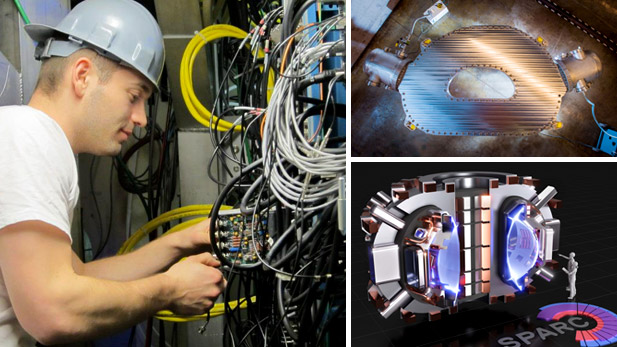Engineering Physics Alumnus Helps Bring Fusion Energy Closer to Reality

As a leader with Commonwealth Fusion Systems, 2008 engineering physics alumnus Dan Brunner has assisted in the development of high-field superconducting magnets to demonstrate net fusion energy for the first time.
The commercialization of fusion energy has taken another step toward reality, thanks to the continuing efforts of 2008 engineering physics alumnus Dan Brunner.
As co-founder and chief technology officer with Cambridge, Massachusetts-based Commonwealth Fusion Systems (CFS), Brunner built a team of over 50 scientists and engineers focused on using high-field superconducting magnets – the most powerful magnetic field its kind ever created on Earth – to design SPARC with a mission to demonstrate net fusion energy for the first time in 2025.
“This was a complex, interdisciplinary design, spanning fields from fusion plasma physics, extreme mechanical engineering, cryogenics, electromagnetics, power electronics, instrumentation and control, nuclear engineering, and systems engineering,” states Brunner, who earned a doctorate in applied plasma physics from MIT in 2013.
A device called a tokamak has led the way in fusion performance for over half a century, yet progress has stalled the last two decades because of a technology blocker. Tokamaks rely on large superconducting electromagnets to efficiently confine and insulate the hot fusion plasma. According to Brunner, the previous generation of superconducting magnets were limited in the strength of the magnetic fields they could create, which resulted in tokamaks so large that fusion wouldn't be economically practical.
This past summer, CFS, in collaboration with Massachusetts Institute of Technology (MIT), demonstrated a new class of high-field superconducting magnets that enable much smaller, economic fusion reactors.
The success of the magnet research and development has brought $1.8 billion in funding to spur further development for the company, including building and operating SPARC to demonstrate net fusion energy.
Brunner has now taken a more traditional CTO role within the company. He primarily spends his time organizing CFS's technology roadmap to fusion energy as well as managing the company's intellectual property portfolio. He is presently creating the technical plans and foundation for a tokamak that will build on recent technological successes that will form a fusion pilot plant, demonstrating net electricity from fusion for the first time. That demonstration device, called ARC, is targeted for completion in the early 2030's.